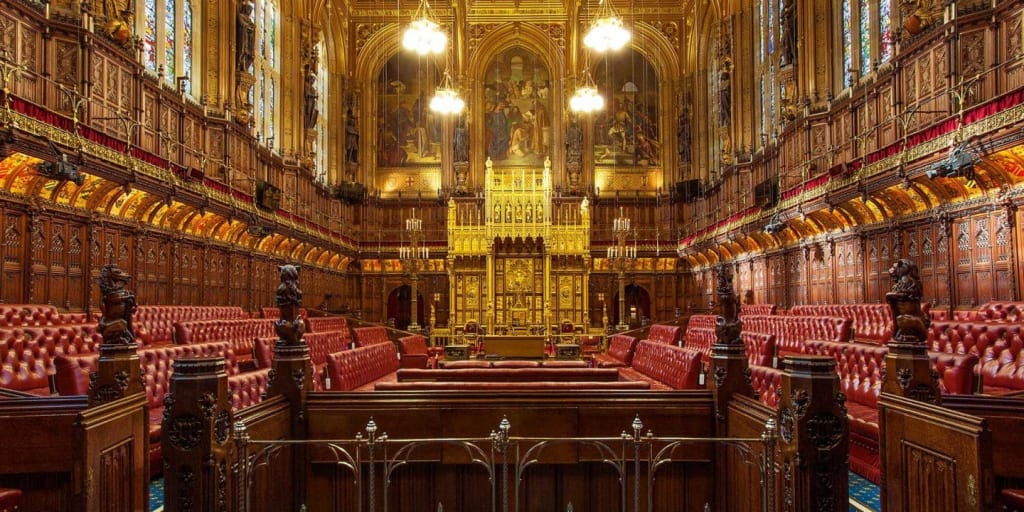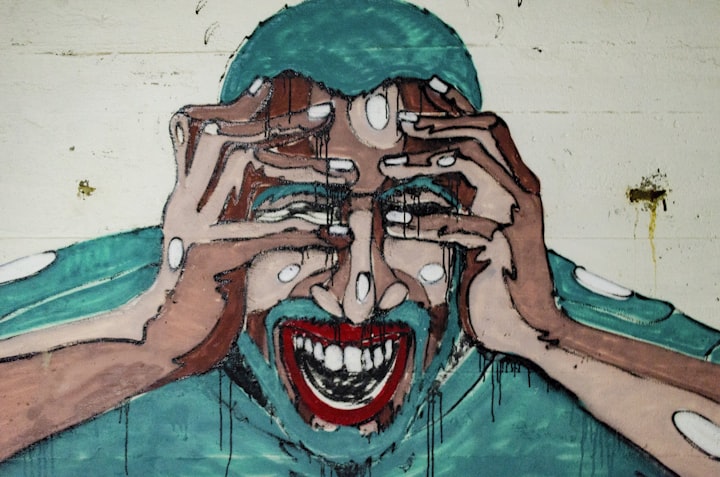How to Optimize you Work Space.
6 Things you should do for creativity and productivity.

A little before the COVID crisis, I was invited to the House of Lords to join a panel discussion. I hadn’t been to the Palace of Westminster for years and was overwhelmed by the scale, the gravity and the beauty of the space. The architecture was completely congruent with its function and the message it conveyed to the visitor. This is a serious and dynamic place.
It uplifted my mood, focused my attention and prepared me for the task ahead. Charles Barry and Augustus Pugin, the architects, had intuitively and skilfully made an environment not only fit for its purpose but one that changed the way people behave and interact.
All designers know that what people see and experience affects how they feel and how they behave. It’s one of the fundamental skills that we learn very early in our careers; the environment can be manipulated so that, with a little bit of skill and knowledge, we can create moods, emotions and feelings by using elements such as space, light, colour, texture views and sound.
What you may not realise is that there is a lot of science that backs up the designer’s intuitions.
When we watch a film, when we enter a cathedral, when we touch an object; our emotions and behaviour are manipulated to create the desired reaction (or action). Whatever our senses can take in and our brains can perceive changes us in some way.
If we know what these triggers are, we can use them to optimise our environments for work or for relaxation.
“We shape our buildings and afterwards our buildings shape us”
Winston Churchill
When we shape our building, we mean we fashion the intent of how we want people to feel. When people enter or use the building, the building or environment makes them feel and behave in a specific way.
This view is backed by environmental psychology which studies how the built or natural environment affects how we think, feel and act.
1. A Room with a View
In 1984, Roger S Ulrich, studied the relationship of surroundings to experience by looking into patient recovery in Paoli Hospital. The subjects were all in similar rooms with the only difference being that some had windows that looked out to trees and the others looked onto a brick wall. Those patients who had views of green leaves rather than brick walls recovered sooner, had fewer complications and needed less medication. Ulrich realised that something external to the patients, their environment, had a measurable effect on their physiognomy.

This is what is now called “brain priming”; where the input or stimulus, in this case, the view triggers an output which changes not only the mental status but the physical status also.
Everything that happened, happened by “design”, i.e. by human agency and intent. So, if one thing affects human physiology, like the view of trees, can this also be true of other elements in an environmental toolbox within our control?
The answer is of course yes! And this became the development of what is called EBD, evidence-based design which is used extensively in healthcare, which looks at the evidence of how what we create affects how we think, feel and act.
2. Colour.
So, if it’s possible to see a connection between elements of the external environment and improvements in wellbeing, are we affected by the colours we see?
In 2009, Zhu and Mehta of the University of British Columbia carried out a study to measure two styles of thinking, Analytical and Creative.
Analytical thinking may be characterised as reason and logic, linear, concrete and detailed, narrow and focussed, single solution, outward-looking and objective, i.e. what is.
Creative thinking may be characterised as almost the opposite; intuitive and insightful, meandering, abstract and non-specific, broad picture, multiple solutions, inward and subjective, i.e. what could be.
What they did was to give a test group various tasks which were on paper, with either a Blue, a Red or a White border on it. The white border acted as a “control group”. The tasks were the same in all three.

What they found was that those tasks which had had a blue border engendered more creative answers than those with a red border, which performed better where analysis and logic were required. This is useful when deciding, for instance, what colour to paint your brainstorming space.
This shows the effect of “priming” the brain. As Rattner says “our mental (idea) space expands and contracts in direct proportion to our perception of physical space”. The more open and expansive we perceive our space to be, the more open we are to new ideas. Blue, as we will see in a moment, is perceived to be expansive and distant. Conversely, the more constrained we perceive our space the narrower our thinking and focus, the more analytical. This was the case with the red-bordered images.

Colour is often used to convey the depth of space. Blue for distant depth and space, warmer for mid special areas, and the warmest tones for things nearby. Blue seems to recede whereas red comes toward us. as in nature. This, of course, has implications for our thinking “style”.
In 2006 Shashi Caan ran an experiment at a Design Trade show in New York. Colourized event tents to study how people behaved, when saturated by colour (there was a similar installation in Shepherd Bush, London in 1976. In the blue tent people tender to gather towards the perimeter of the tent in groups of ones and twos as if being pulled outwards, in the red tent people tended to converge towards the centre of the tent as if the walls were pushing them in.
(for mor about colour visit “the little book of colour” Karen Haller)
(see also “Context is Everything”)

3. Space and Volume.
The sensation of space and volume also has a measurable effect on people’s behaviour.
In 2010 McCoy and Evans conducted an experiment where they got students (it’s always students) to take an exam in a room with a high ceiling and another in a room with a low, suspended ceiling. The perception of 3D volume affected that those who were in the high ceiling who performed better on the creative tasks, whereas those who were in the lower ceiling room performed better on the analytical tasks.
This holds also for spaces that have a view to the outside as opposed to no view. Rooms with a view were better for creative pursuits than those with no view. This further confirms the connection between perceived mental space and physical space.
Of course, this can also be achieved by hanging artworks (for instance, landscapes) which also create the perception of space. The brain reacts similarly to both the real view (although slightly better) as to the perceived view. This was confirmed by researchers, Liberman et A. (2011) and Ulrich et al. (2007).
Construal level theory, CLT, developed by Trope (2007) states that the farther away a person construes an object or event, the more abstract they will understand it to be. The closer, the more focussed.
We tend to see a pattern where detail is less evident and detail where things are closer. The difference between analytical thinking and creative thinking. If you want to think creatively you need to think (and view) more broadly and more abstractly. For analytical thinking, you need detail.

4. Lighting and Sound
Whilst less tangible than physical space, lighting nevertheless has a powerful effect on our feelings of wellbeing and behaviour. Optimum levels of lighting are essential primes for each specific task and mode of thinking. So, does lighting influence creative thinking, and if it does, what level of lighting is best for ideation and creative thinking?
150 lux is the right amount for creative thinking. If you consider that 300 lux is optimum for reading, 500 for office space, 1000 for a supermarket. An overcast day will be roughly 10,000 lux and a sunny day could be 100,000 lux. So, why should such low levels of lighting be conducive to creativity?
The thinking behind this is that brightness of illumination focusses attention. For instance, if you wanted to repair a watch you would normally add extra light so that you could see the fine detail. Thus focussed, analytical vision is difficult at 150 lux. The brain switches from focussed attention to de-focused attention. i.e. broader more generalised and internal reflection.
This could also be due to something called “Locus of Control”. The feeling of having or being in control. Not being under the scrutiny of someone or something else, as in “under the spotlight”. Lower levels of light encourage freedom and deviation from the norm without scrutiny.
Daylight Colour temperature changes throughout the day from warm tones to harder cooler tones in the middle of the day to warmer tones during the evening. This sequence is known as the Circadian cycle (Abdullah et al. 2016) and controls a lot of our natural body rhythms from muscle strength, energy levels, to sleep/wake patterns and our creativity.

If you recall the earlier study on colour, it identified blue (higher frequencies) as the colour that is best for creativity. And that’s what studies have shown; we are at our creative peak when the light outside is in the blue, higher frequency ranges. So, most of us would be at our most creative during the late morning to early afternoon.
There may be other factors at play, such as alertness, but, for myself, I am more productive in the morning and find that creative tasks are best after physical activity. Yet many “creatives” are more productive late at night (although I don’t know if the productivity is necessarily creative).
This is why the light in offices and our screens have been shown to throw out our biorhythms and disrupt sleep patterns. Many studies have shown that watching blue light from your phone screen does disrupt sleep patterns, which disrupts your circadian cycles.
5. NOISE.
Noise levels similarly have optimum levels for creativity according to Mehta, Zhu & Cheema (2012). 70 decibels are roughly the noise level of an average coffee shop, which may explain why so many people find it productive to work in a cafe environment. However, the noise needs to contain some white noise. Noise that doesn’t demand our attention.

6. NATURE, THE BRAIN, & NEUROGENESIS.
There have been many studies on the effect of stimulating environments and what is called “neurogenesis”, the production and retention of new neurons (brain cells). Until recently it was thought that you had all the brain cells you were ever going to have by the time you were in your early 20s and that it was all downhill from there. Not so, a Stanford University study proved that the quality of your environment, your sleep and your nutrition will have a significant effect on your ability to create and retain new neurons. The key here is “stimulation”. As with the study on recovering patients and the views they had, natural environments create a better sense of well-being, which translates directly into better cognitive skills. What we see and experience, particularly in nature, will manifest in our ability to solve problems.
Stress is one of the major causes of depression. Stress increases cortisol in the brain and body which increases inflammation and cognitive decline. The natural environment has been shown to reduce stress and therefore reduce the amount of cortisol produced which then reduces inflammation and allows better neurogenesis.

The conclusion, which comes as no surprise to most of us, is that a natural environment is good for you and helps to promote a sense of wellbeing, both mental and physical. The key though is stimulation; learning new things, immersing yourself in different cultures is all food for the brain and for the body.
If we know how people react to different stimuli we can arrange and design our spaces to optimise the environment.
The working environment is only one of the many elements, albeit an important element, that can engender creative thinking, but what is clear is that our environments do affect our wellbeing and our ability to optimise certain specific and some general tasks.
But there’s no reason that you shouldn’t get as many elements working in your favour to put you in a place where creativity and productivity can happen.






Comments
There are no comments for this story
Be the first to respond and start the conversation.